Waste management is a complex challenge for Panama and the world
Ideas for Change
July 13, 2022
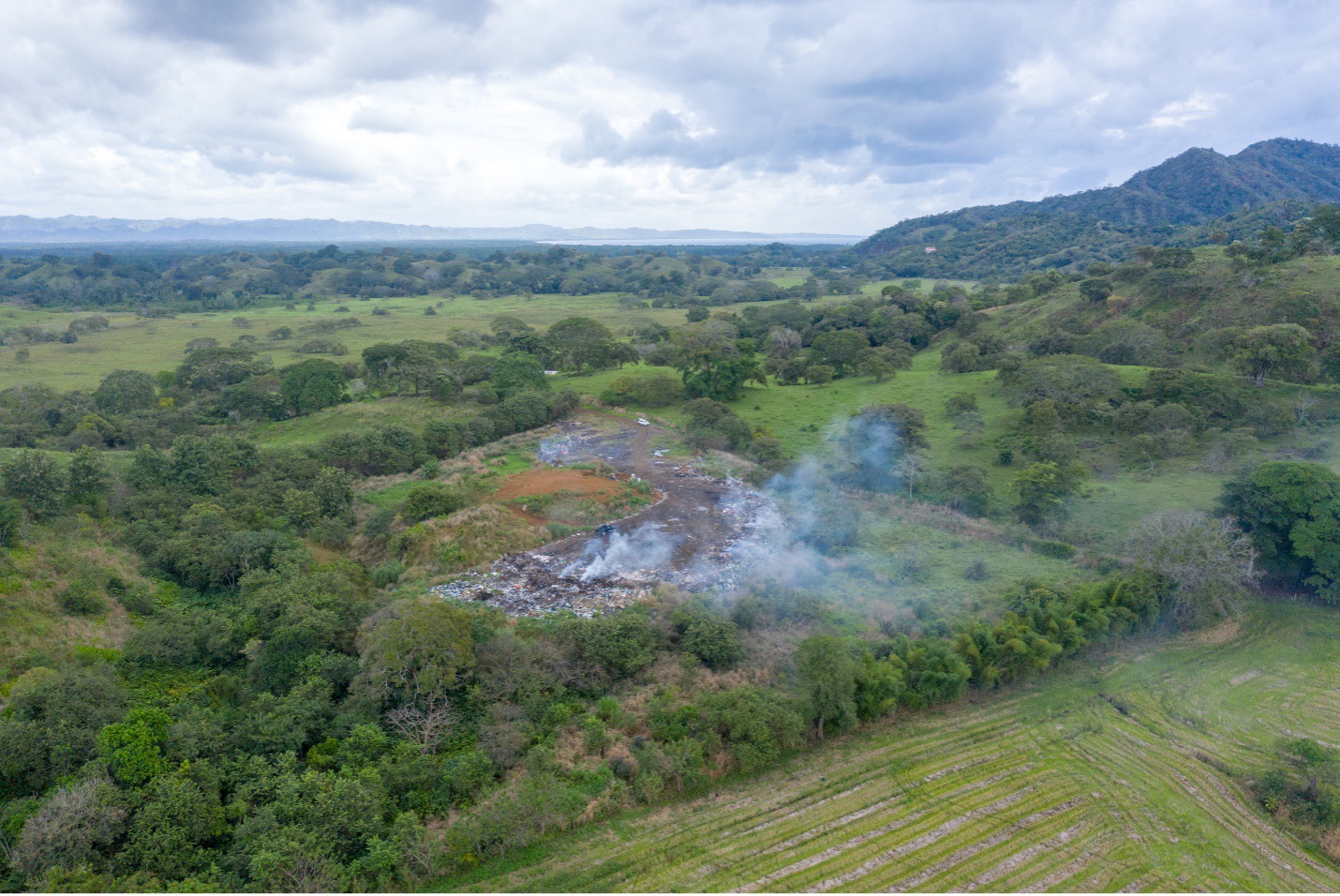
Panoramic view of the municipal dumpsite at Tonosí, Panamá
Solid waste management is one of the main problems that Panama faces, it is all over the news, it is seen everywhere and despite massive efforts across decades, the challenge remains… and seems to get worse.
However, like any complex challenge, the problem looks different depending on the lens from which you look. Therefore, as a Lab, we seek to integrate multiple perspectives and knowledge on the subject from those who are closest to this problem, at the local level.
Why can no expert 'solve' the solid waste challenge?
Often, when there is a problem, we look for an expert to help us solve them. Technical expertise is necessary, scarce, and in the case of simple or complicated problems in the field of development is exactly the type of approach that is required. However, when we face complex or chaotic problems, expert knowledge becomes insufficient.
Complex problems of our times, such as solid waste management (SWM), require not only a transdisciplinary approach, but also the expertise that is built in the day to day of those who live the effects of these problems.
Therefore, addressing complex problems based only on expert knowledge leaves a huge gap in the understanding of specific dynamics and contexts. Achieving this requires a greater degree of inclusion and active participation of actors.
Collective intelligence: an alternative to address complex challenges
The collective intelligence methodology allows you to integrate people, data and knowledge, often with the use of technology, to understand problems, find solutions and generate changes. As a concept, this is not something new. It is based on the theory that diverse groups of people are collectively smarter than any individual on their own. Different people have different pieces of information and different perspectives that, when combined, create a complete picture of a problem and how to solve it.
Here is a nutshell of what we learned with this collective intelligence exercise on solid waste management in Tonosí
Building from what already exists at a grassroots level
In June, our laboratory team went to Tonosí, Los Santos, together with the Azuero Sostenible initiative to understand together with local actors what works and what does not work for SWM.
Initially, 3 focus groups and walks were coordinated in the coastal communities of Búcaro, Guánico and Cambutal to better understand the context of Tonosí and reflect from the perspectives of community leaders of Tonosí.
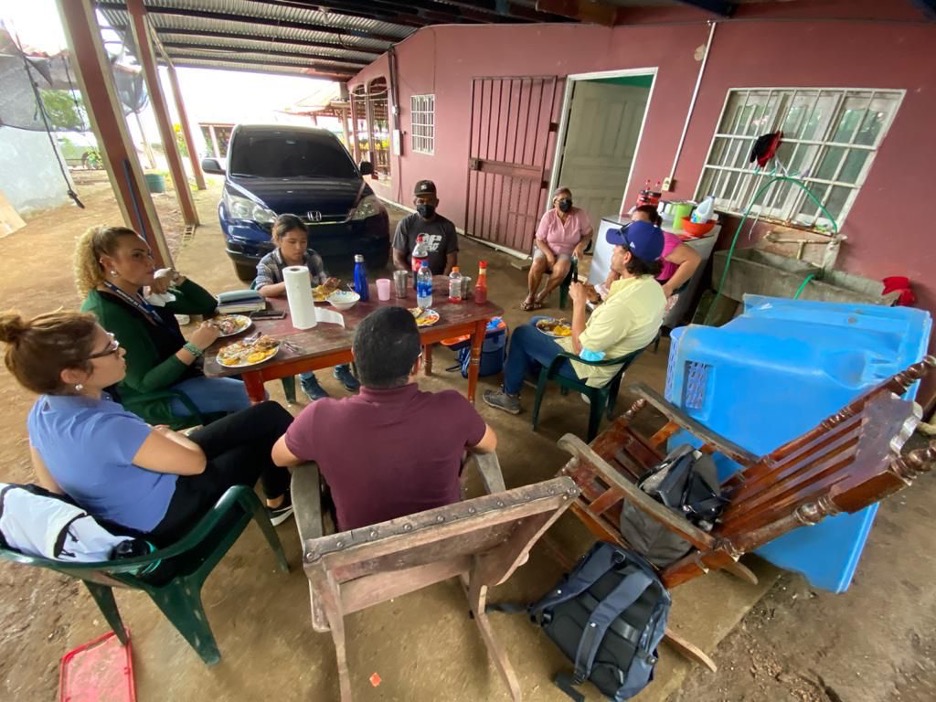
Focus group at the community of Búcaro, Tonosí
This allowed us built from the strengths and challenges in the SWM, as well as its community initiatives in favor of the environment.
Articulating grassroots perspectives with a broader set of actors
Next, together with the Municipality of Tonosí we organized a workshop in the session of the municipal council on June 3rd; in which institutional actors (mayor's office, ministries and community boards) waste pickers of the municipality, NGOs, businesses and community-based organizations and leaders were invited.

Photo of collective intelligence workshop at the municipality of Tonosí
The workshop aimed to understand the problem of waste from the perspectives of the participants and to know what works and what does not work in for SWM and what ideas for change we could imagine together.
Team of the Lab and the Sustainable Azuero initiative, sought to answer 4 questions:
- What is the challenge with respect to solid waste in Tonosí?
- What has worked for better waste management?
- What hasn't worked? and
- What ideas for change can we imagine?
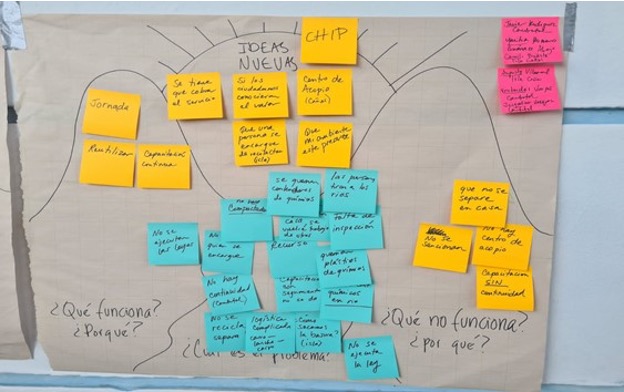
Flipchart of one of the workshop groups in the municipal council of Tonosí on June 3, 2021
1. What is the challenge of solid waste?
The micro worlds of Tonosí: 11 corregimientos and a single municipal collection truck
From the eyes of the participants, the challenge of solid waste easily crumbles into a world of interconnected micro problems, often with the feeling that those problems are "someone else's job". Tonosí, the largest district in the province of Los Santos, has little infrastructure for the GRS and a single collection truck, which only operates in the town center. Outside the center, the operation is decentralized and poorly coordinated, with some corregimientos working the SWM autonomously and other corregimientos leaving the responsibility in the hands its citizens.
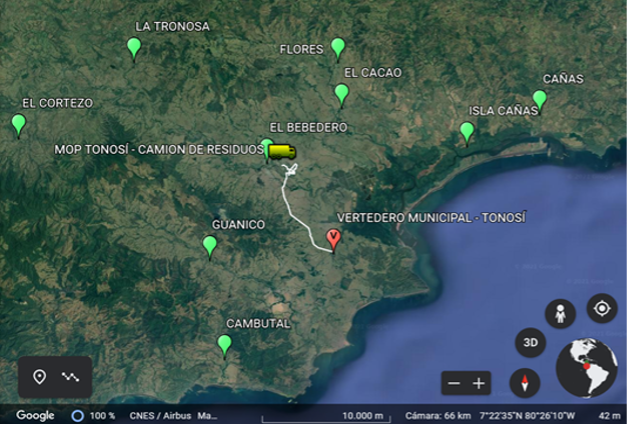
The district of Tonosí only has a waste collection service in Tonosí Cabecera, so outside this route everyone handles their waste as they can.
It is not only the territorial extension, but the diversity of the landscape of Tonosí
For example, the corregimiento of Isla Cañas has not only tried to carry out an internal collection, but also to take the waste in boats and then be transported to the municipal landfill about 20 kilometers away. This expensive operation could not be sustained, and it was decided to create a landfill within the same island, located in a mangrove area.
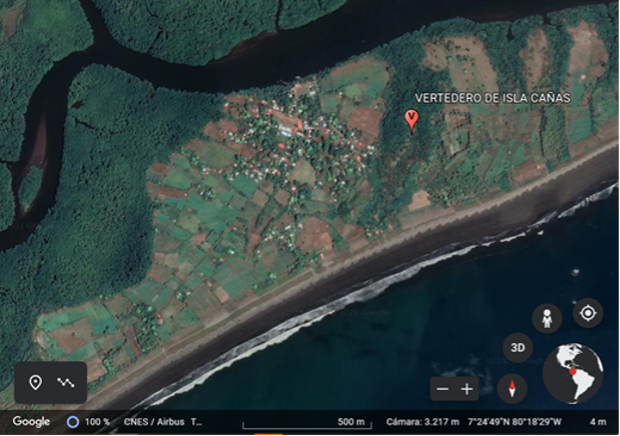
Location of the Isla Cañas landfill
La Tronosa, El Cortezo and corregimientos in the upper part of the Tonosí Valley, do not have a collection service and are more than 30 kilometers from the Tonosí dumpsite. The only existing efforts are cleaning days, however, there is no consistent collection service.

In the case of corregimientos such as La Tronosa, El Cortezo and Altos de Güera, the route to dispose of solid waste is more than 70 kilometers round trip, not counting the internal routes within the communities of these corregimientos.
This results in a high incidence of burning, especially in the summer, and in proliferation of small dumpsites on the sides of roads.
The last census reported that almost 70% of the population of Tonosí burn their waste.
2. What works and how does it work?
In Tonosí Cabecera, if there is a collection service, which occurs from Monday to Friday consistently. However, outside the Cabecera, the (residential) collection service is mostly covered by communal boards in a variety of ways:
|
Local government |
Type of service |
Frequency |
Cost |
|
Tonosí Center |
Public (municipal) |
Twice a week |
$2.00 per month (households) / $5.00 (businesses) |
|
Bebedero |
Public (local government) |
Twice a month |
Free, paid and provided by the local government of Bebedero |
|
Guánico |
Private |
Twice a month |
Free for citizens, paid by the local government of Guánico to an individual waste collector. |
|
Cañas |
Private |
Once a week |
$1.00 per-bag of waste |
|
Flores |
Private |
Once a week |
$1.00 per-bag of waste |
|
Cacao |
Private |
Once a week |
$1.00 per-bag of waste |
|
Cambutal |
Private |
Twice a week |
$1.00 per-bag of waste |
|
La Tronosa |
Clean up days |
Quarterly (approximately) |
Free |
|
El Cortezo |
Clean up days |
Quarterly (approximately) |
Free |
|
Altos de Güera |
Clean up days |
Quarterly (approximately) |
Free |
Table 1 – Type, frequency and cost of waste collection by local government
While these practices work to some extent, they are not considered ideal by the participants, as much as it isn’t necessarily negative that the waste collection service can be decentralized, it needs better coordination to have a more orderly and efficient waste management.
Alternative ways to reduce organic waste
Reducing and recycling waste are two practices that work, however, these are seen and defined differently by different actors. For example, in district households it is common to give food waste to chickens and household pets.
On the other hand, when talking about composting, some people did not know the term, the best recognized word was organic fertilizer.
The recycling of metallic waste materials by informal waste workers
Effective recycling in the municipality passes through the hands of recyclers, who depend economically on this activity and recover copper, bronze, aluminum and iron.
Through this activity, they build a chain of material recovery in the district of Tonosí that is little recognized and incorporated into the solid waste management of the municipality.
You can read more about the contributions and current situation of informal waste workers in Tonosí and Panamá in a previous blog.

Grassroots waste pickers, informal workers who contribute significantly to SWM, depend on these activities, as it is their main means of subsistence.
3. What does NOT work and why?
A deteriorating public infrastructure
During the activity, the participants consider that the municipal solid waste management has a public infrastructure is in poor condition and does not have the capacity to provide the service for all of Tonosí.
Despite the dangers and illegality of burning waste, fining for this activity does not represent a simple solution, given that in many communities where this happens the collection service is not given.
Low collection of the waste collection fee
There is a high delay in the payment of the waste collection fee, and in turn, there is no collection mechanism of this outside the Head of part of the municipality.
On the other hand, the waste that reaches the landfill is disposed of in any way and without any type of control. The rules, from the payment of the waste collection fee to the final disposition are not known by everyone, and although some are known, they are not complied with or properly supervised by the municipality.

Photo of the municipal dumpsite of the municipality of Tonosí
Barriers to the application of 3Rs in Tonosí On the other hand, 3R activities (reduce, reuse and recycle) are inconsistent. Training has been given on these activities. However, communities are then left adrift by the lack of ongoing follow-up or support to institutionalize/establish these practices in the long term. There are frustrating examples of recycling from communities and institutions where a lot of material is recovered, but then there is no one to pick it up and take it to a recycler. In previous attempts, the cost of transportation is higher than what is paid for the material. Therefore, after the trip, it is note even enough to pay for the gas.

Photo of members of the community of Cambutal after a beach clean up
However, there are multiple efforts by NGOs and community-based organizations that promote the protection and conservation of the environment in Tonosí, including activities related to waste management.
These organizations work with minimum to no resources and, beyond specific events, receive little support or opportunities for participation in decision-making spaces by local institutions.
4. Ideas for change
From the perspectives of the participants and the discussion between groups, ideas for change were built on what they considered and imagined as possible for the communities of Tonosí. Among some suggested ideas, these were mentioned:
- Train on the production and use of organic fertilizer, reuse and recycling of materials with continuity and with the tools to be able to learn by doing, building from the efforts that the communities are already making.
- Give incentives for the separation of waste, especially between organic and non-organic material, since organic can contaminate non-organic and make the recovery of materials more difficult.
- After learning about the work of waste pickers, the idea of promoting their work emerged so that more people can carry out recycling activities in their home or business, and in turn, that recyclers can recover more materials and improve their income and conditions.
- Collectively, we learned that it is necessary to understand the recycling market, the volume needed to make it a financially sustainable activity, and how to separate and prepare it to get the most out of it.
- Create separation and collection stations for separation and compaction of recyclable waste that has the most interest of the community, starting with few materials and expanding with separation training: starting little by little.
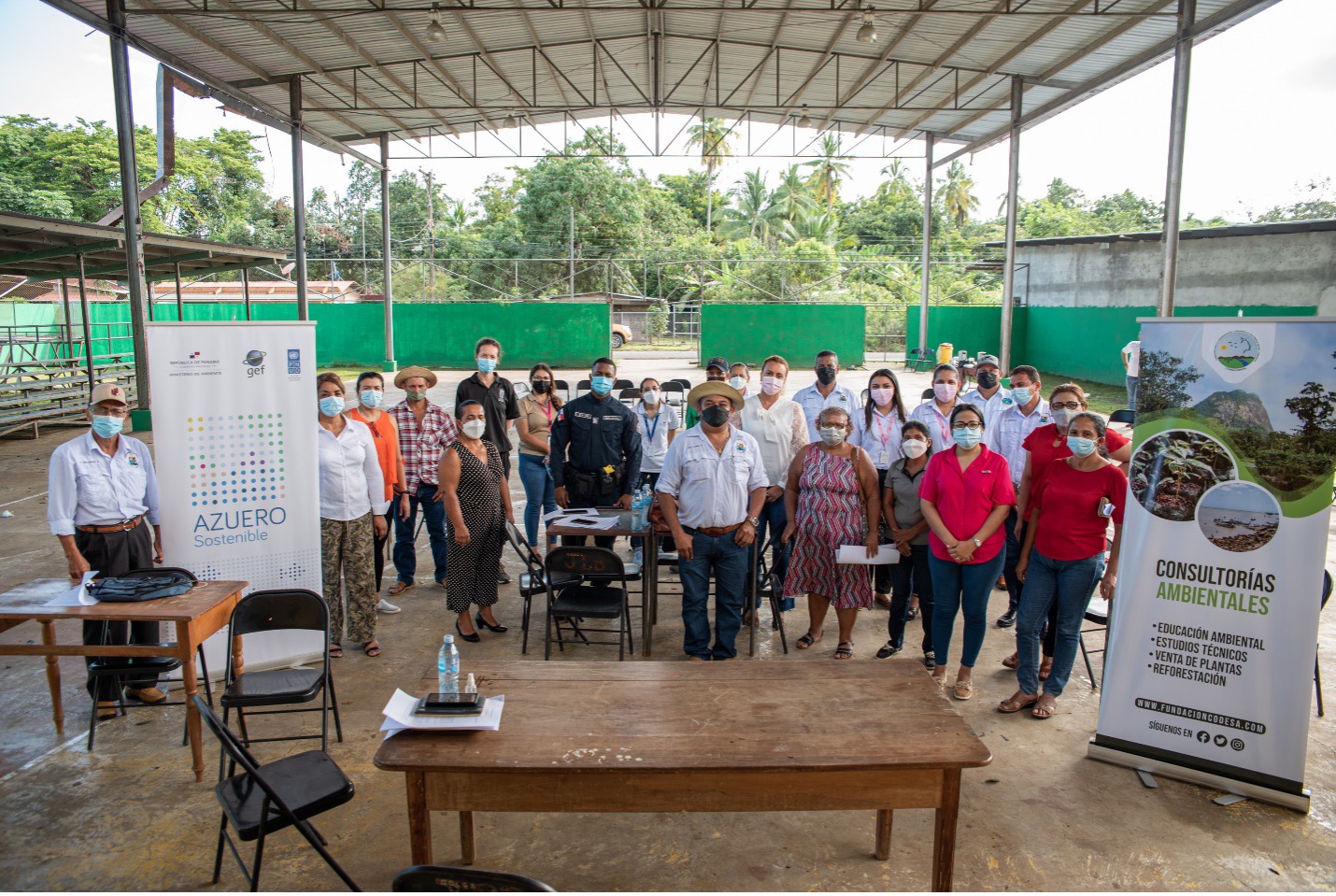
Photo of participants of the collective intelligence workshop
This exercise and its results are the first step towards the creation of the Municipal Waste Management Plan for the Municipality of Tonosí, which seeks to ensure the participation and engagement of citizens in its creation. Read about successful cases using collective intelligence in this report and share insights on how we could use collective intelligence to improve solid waste management to: laboratorioaceleracion.pa@undp.org.

 Locations
Locations